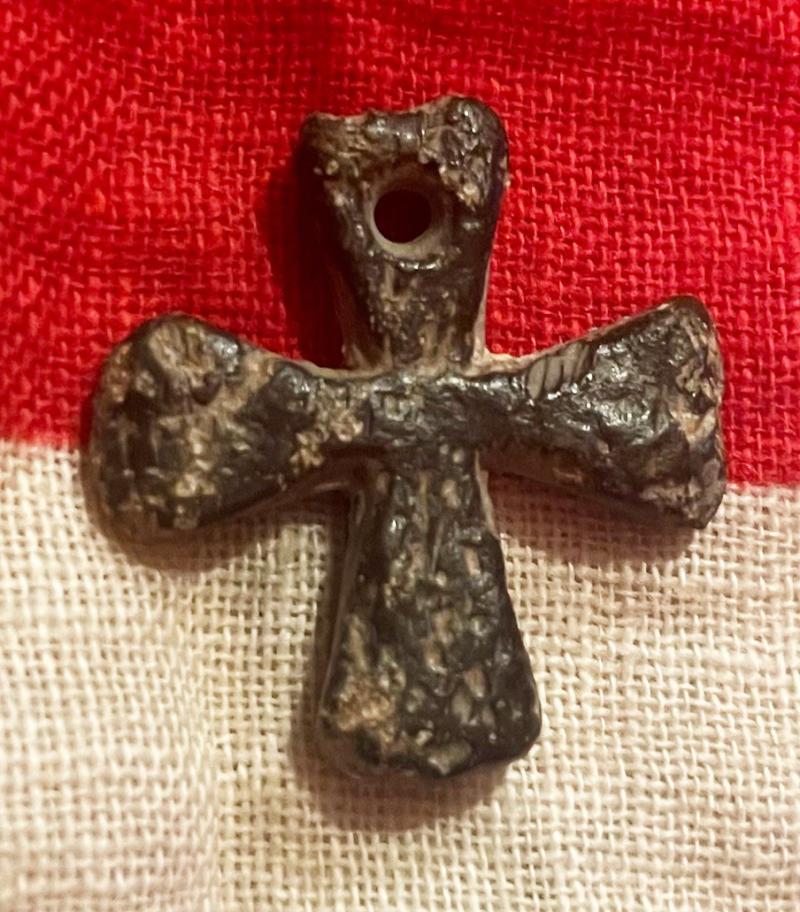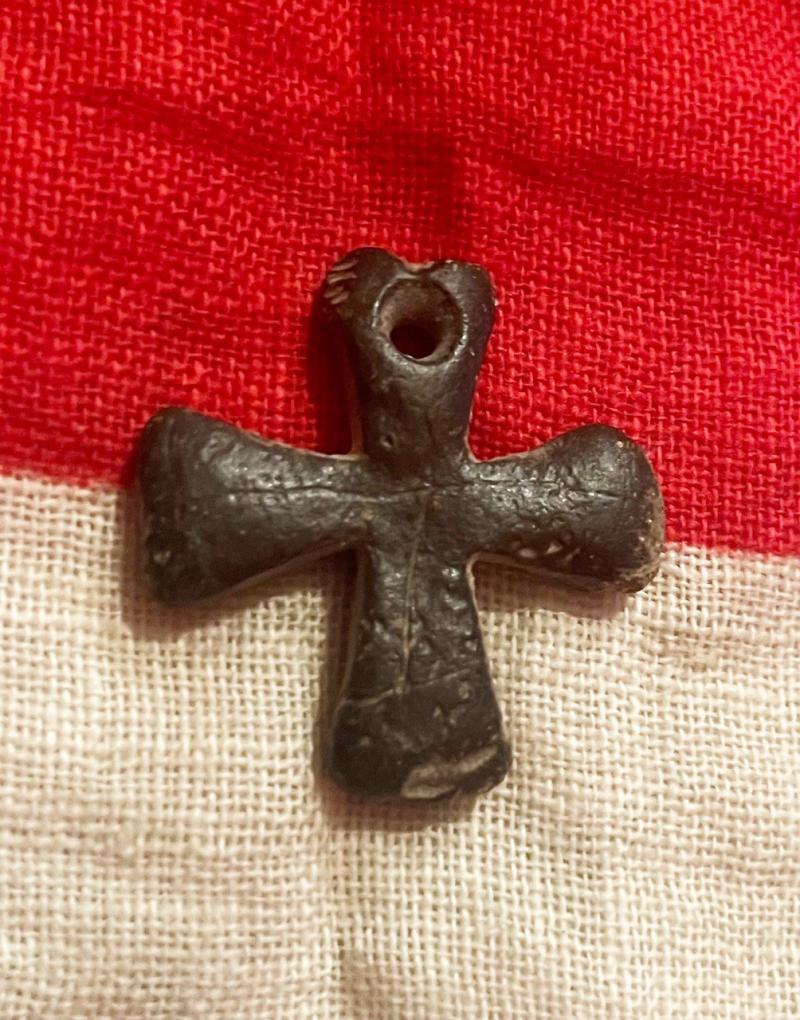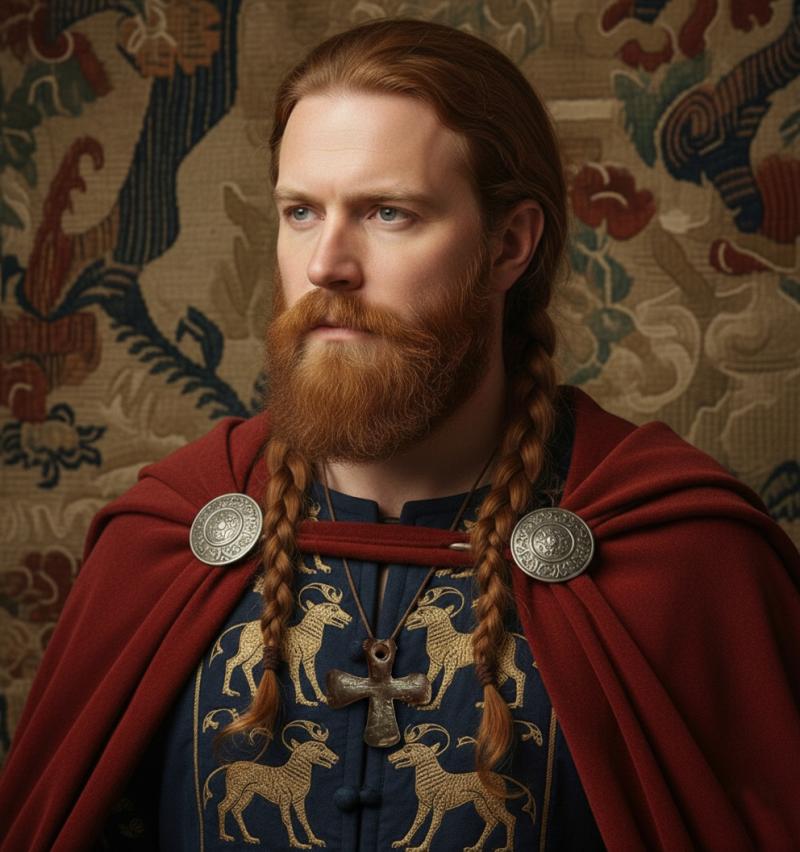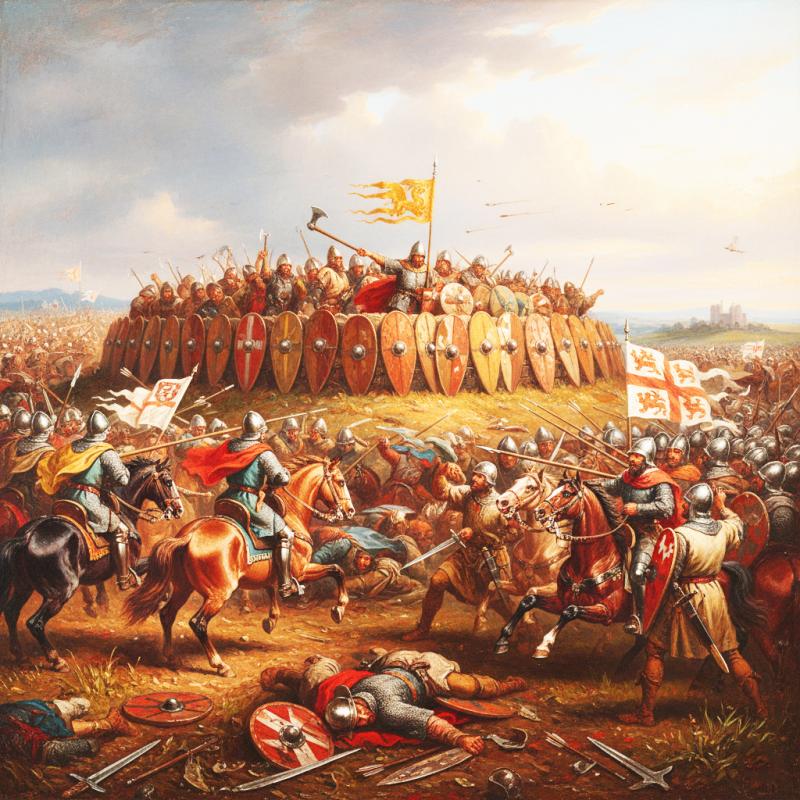A Most Rare Original Anglo Saxon Bronze Crucifix Pendant Around 1000 to 1300 Years Old. One Side Engraved With Stylized Palm Tree Fronds. From Stamford Bridge Region Excavated in 1820
The Battle of Stamford Bridge (Old English: Gefeoht æt Stanfordbrycge) took place at the village of Stamford Bridge, East Riding of Yorkshire, in England, on 25 September 1066, between an English army under King Harold Godwinson and an invading Norwegian force led by King Harald Hardrada and the English king's brother Tostig Godwinson. After a bloody battle, both Hardrada and Tostig, along with most of the Norwegians, were killed. Although Harold Godwinson repelled the Norwegian invaders, his army was defeated by the Normans at Hastings less than three weeks later.
The battle has traditionally been presented as symbolising the end of the Viking Age, although major Scandinavian campaigns in Britain and Ireland occurred in the following decades, such as those of King Sweyn Estrithson of Denmark in 1069–1070 and King Magnus Barefoot of Norway in 1098 and 1102–1103.
The exact location of the battle site is not known for certain. Sources indicate that it took place along the Derwent River, where a wooden bridge crossed the water. There are indications of a meadow on the west side of the river and higher ground on the eastern side. The original bridge no longer exists, and no archaeological traces of it remain. The traditional locating of part of the battle at Battle Flats is based on no contemporary references. Statements that in the 18th century skeletons and weapons were found there have not been corroborated by modern finds
According to Snorri Sturluson's Heimskringla, before the battle a single man rode up alone to Harald Hardrada and Tostig. He gave no name, but spoke to Tostig, offering the return of his earldom if he would turn against Hardrada. Tostig asked what his brother Harold would be willing to give Hardrada for his trouble. The rider replied "Seven feet of English ground, as he is taller than other men" (implying that both Hardrada and his army would be killed and buried on English soil). Then he rode back to the Saxon host. Hardrada was impressed by the rider's boldness, and asked Tostig who he was. Tostig replied that the rider was Harold Godwinson himself. According to Henry of Huntingdon, Harold said "Six feet of ground or as much more as he needs, as he is taller than most men."
Anglo-Saxon pilgrims also travelled abroad. Within a century of the arrival of missionaries from Rome to convert the pagan Anglo-Saxons, Anglo-Saxon pilgrimage to Rome was already well established. Not only monks and nuns, but kings and other lay people travelled to Rome. Some, like King Ine of Wessex and King Coenred of Mercia, remained there to die close to the shrines of the apostles Peter and Paul; others, such as Benedict Biscop (d. 689) and St Wilfrid (d. 709), returned with relics, books and increased understanding of the history, teaching and liturgy of the Church. A hostel (schola) was established close to St Peter's for English pilgrims and other visitors to Rome. Women pilgrims also made the arduous and dangerous journey. In the mid-eighth century St Boniface (d. 751) wrote to the Archbishop of Canterbury asking him to forbid 'matrons and nuns' to travel to Rome because many of them perished and few kept their virtue. Some English pilgrims travelled even further afield. St Willibald left an account of a visit to the Holy Land and Constantinople, recorded by an English nun, Huneberc or Hugeberc.
A portrai painting in the gallery of an Anglo Saxon noble wearing a larger version of this crucifix pendant, this example is exactly the same, but around half that size.
Very strong and robust, perfectly suitable to wear today.
260mm across
Code: 25939




